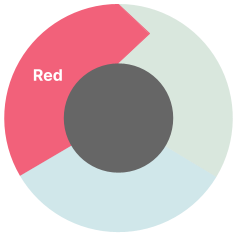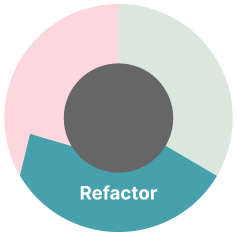TDD with GitHub Copilot
by means of Paul Sobocinski
Will the appearance of AI coding assistants corresponding to GitHub Copilot imply that we gained’t want exams? Will TDD develop into out of date? To respond to this, let’s read about two techniques TDD is helping tool construction: offering just right comments, and a method to “divide and overcome” when fixing issues.
TDD for just right comments
Just right comments is rapid and correct. In each regards, not anything beats beginning with a well-written unit check. Now not guide trying out, now not documentation, now not code overview, and sure, now not even Generative AI. In truth, LLMs supply inappropriate data or even hallucinate. TDD is particularly wanted when the use of AI coding assistants. For a similar causes we’d like rapid and correct comments at the code we write, we’d like rapid and correct comments at the code our AI coding assistant writes.
TDD to divide-and-conquer issues
Downside-solving by way of divide-and-conquer signifies that smaller issues may also be solved quicker than greater ones. This permits Steady Integration, Trunk-Primarily based Construction, and in the end Steady Supply. However will we in reality want all this if AI assistants do the coding for us?
Sure. LLMs infrequently give you the precise capability we’d like after a unmarried instructed. So iterative construction isn’t going away but. Additionally, LLMs seem to “elicit reasoning” (see related find out about) after they remedy issues incrementally by way of chain-of-thought prompting. LLM-based AI coding assistants carry out very best after they divide-and-conquer issues, and TDD is how we do this for tool construction.
TDD pointers for GitHub Copilot
At Thoughtworks, we’ve been the use of GitHub Copilot with TDD because the get started of the 12 months. Our function has been to experiment with, overview, and evolve a chain of efficient practices round use of the instrument.
0. Getting began

Beginning with a clean check dossier doesn’t imply beginning with a clean context. We regularly get started from a consumer tale with some tough notes. We additionally communicate thru a kick off point with our pairing spouse.
That is all context that Copilot doesn’t “see” till we put it in an open dossier (e.g. the tip of our check dossier). Copilot can paintings with typos, point-form, deficient grammar — you title it. However it might’t paintings with a clean dossier.
Some examples of beginning context that experience labored for us:
- ASCII artwork mockup
- Acceptance Standards
- Guiding Assumptions corresponding to:
- “No GUI wanted”
- “Use Object Orientated Programming” (vs. Practical Programming)
Copilot makes use of open information for context, so retaining each the check and the implementation dossier open (e.g. side-by-side) very much improves Copilot’s code crowning glory skill.
1. Pink

We start by means of writing a descriptive check instance title. The extra descriptive the title, the simpler the efficiency of Copilot’s code crowning glory.
We discover {that a} Given-When-Then construction is helping in 3 ways. First, it reminds us to supply trade context. 2d, it permits for Copilot to supply wealthy and expressive naming suggestions for check examples. 3rd, it unearths Copilot’s “working out” of the issue from the top-of-file context (described within the prior segment).
As an example, if we’re running on backend code, and Copilot is code-completing our check instance title to be, “given the consumer… clicks the purchase button”, this tells us that we must replace the top-of-file context to specify, “suppose no GUI” or, “this check suite interfaces with the API endpoints of a Python Flask app”.
Extra “gotchas” to be careful for:
- Copilot would possibly code-complete a couple of exams at a time. Those exams are regularly unnecessary (we delete them).
- As we upload extra exams, Copilot will code-complete a couple of strains as a substitute of 1 line at-a-time. It is going to regularly infer the proper “prepare” and “act” steps from the check names.
- Right here’s the gotcha: it infers the proper “assert” step much less regularly, so we’re particularly cautious right here that the brand new check is appropriately failing sooner than transferring onto the “inexperienced” step.
2. Inexperienced

Now we’re in a position for Copilot to lend a hand with the implementation. An already present, expressive and readable check suite maximizes Copilot’s possible at this step.
Having stated that, Copilot regularly fails to take “child steps”. As an example, when including a brand new way, the “child step” approach returning a hard-coded worth that passes the check. So far, we haven’t been ready to coax Copilot to take this method.
Backfilling exams
As an alternative of taking “child steps”, Copilot jumps forward and offers capability that, whilst regularly related, isn’t but examined. As a workaround, we “backfill” the lacking exams. Whilst this diverges from the usual TDD float, we’ve but to look any critical problems with our workaround.
Delete and regenerate
For implementation code that wishes updating, top-of-the-line approach to contain Copilot is to delete the implementation and feature it regenerate the code from scratch. If this fails, deleting the process contents and writing out the step by step method the use of code feedback would possibly lend a hand. Failing that, one of the best ways ahead could also be to easily flip off Copilot momentarily and code out the answer manually.
3. Refactor

Refactoring in TDD approach making incremental adjustments that reinforce the maintainability and extensibility of the codebase, all carried out whilst holding conduct (and a running codebase).
For this, we’ve discovered Copilot’s skill restricted. Imagine two eventualities:
- “I do know the refactor transfer I need to take a look at”: IDE refactor shortcuts and lines corresponding to multi-cursor choose get us the place we wish to move quicker than Copilot.
- “I don’t know which refactor transfer to take”: Copilot code crowning glory can not information us thru a refactor. Then again, Copilot Chat could make code growth ideas proper within the IDE. We’ve began exploring that function, and notice the promise for making helpful ideas in a small, localized scope. However we’ve now not had a lot luck but for larger-scale refactoring ideas (i.e. past a unmarried way/serve as).
From time to time we all know the refactor transfer however we don’t know the syntax had to elevate it out. As an example, making a check mock that might let us inject a dependency. For those eventualities, Copilot can lend a hand supply an in-line resolution when triggered by way of a code remark. This protects us from context-switching to documentation or internet seek.
Conclusion
The average pronouncing, “rubbish in, rubbish out” applies to each Knowledge Engineering in addition to Generative AI and LLMs. Said in a different way: upper high quality inputs permit for the aptitude of LLMs to be higher leveraged. In our case, TDD maintains a top stage of code high quality. This top quality enter ends up in higher Copilot efficiency than is in a different way conceivable.
We subsequently suggest the use of Copilot with TDD, and we are hoping that you just to find the above pointers useful for doing so.
Because of the “Ensembling with Copilot” workforce began at Thoughtworks Canada; they’re the principle supply of the findings coated on this memo: Om, Vivian, Nenad, Rishi, Zack, Eren, Janice, Yada, Geet, and Matthew.

